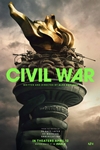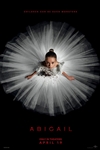Dark Passage (1947) (NR) ★★½
 In the history of motion pictures, there has never been a more romanticized couple then Humphrey Bogart and Lauren Bacall. When it was revealed that their sizzling on-screen chemistry had an off-screen component, they became the biggest story in Hollywood. Between 1944 and 1948, the pair made four movies together. (They were planning a fifth in 1955 but Bogart's esophageal cancer, which took his life in early 1957, forced a halt to pre-production.) Three are universally recognized as classics: To Have and Have Not, The Big Sleep, and Key Largo. The other, 1947's Dark Passage, is often forgotten or overlooked - and for good reason; it's not in the same category as the others. The plot is convoluted and littered with impossible-to-shake-off coincidences. The first-person approach employed by director Delmar Daves in the first third feels needlessly gimmicky. And the conclusion is weak. It's not all bad, however. The story is involving, the atmosphere is as starkly noir as anything Bogart participated in, and the dynamic between the leads is as conspicuous as ever. Today, more than seventy years after its release, the reason to see Dark Passage is Bogie and his #1 leading lady, and they don't disappoint.
In the history of motion pictures, there has never been a more romanticized couple then Humphrey Bogart and Lauren Bacall. When it was revealed that their sizzling on-screen chemistry had an off-screen component, they became the biggest story in Hollywood. Between 1944 and 1948, the pair made four movies together. (They were planning a fifth in 1955 but Bogart's esophageal cancer, which took his life in early 1957, forced a halt to pre-production.) Three are universally recognized as classics: To Have and Have Not, The Big Sleep, and Key Largo. The other, 1947's Dark Passage, is often forgotten or overlooked - and for good reason; it's not in the same category as the others. The plot is convoluted and littered with impossible-to-shake-off coincidences. The first-person approach employed by director Delmar Daves in the first third feels needlessly gimmicky. And the conclusion is weak. It's not all bad, however. The story is involving, the atmosphere is as starkly noir as anything Bogart participated in, and the dynamic between the leads is as conspicuous as ever. Today, more than seventy years after its release, the reason to see Dark Passage is Bogie and his #1 leading lady, and they don't disappoint.
When Dark Passage begins, Vincent Parry (Bogart) has just escaped from San Quentin, where he was serving a sentence for killing his wife. He's the classic wrongly convicted man who went to jail primarily because of the testimony of Madge Rapf (Agnes Moorehead), a friend of the dead woman. Fleeing from the penitentiary, Parry hitches a ride but the driver (Clifton Young) hears a radio broadcast and deduces Parry's identity. The car stops and there's brief fracas in which the driver ends up lying unconscious on the side of the road. Enter Irene Jansen (Bacall), a beautiful young woman who is sympathetic to Parry's cause and agrees to smuggle him into San Francisco and provide him with shelter until he can figure out his next move. The scene in which they cross the Golden Gate Bridge, with a roadblock at the entrance and a cop on a motorcycle patrolling the span, is among Dark Passage's tensest sequences.
After leaving Irene's place, Parry meets with his best friend, George (Rory Mallinson), who agrees to let him stay for a week. Parry then visits a plastic surgeon (Housely Stevenson), who gives him a new face. The heavily bandaged man returns to George's house to find him dead. With nowhere else to go, Parry returns to Irene, who again takes him in. During his recovery, the two fall in love. Once the bandages are off, Parry heads out on his own to clear his name, leaving Irene wondering if she will ever again see him.
Dark Passage is presented in three acts. The first, which is the most controversial, elects to show events from Parry's perspective. About 90% of the shots are therefore first-person; in those rare cases when Daves use a traditional, third-person approach, Parry's face is obscured in shadow (although we are given an opportunity to see what he looks like via a newspaper clipping). The practical reason for this is that it allows Daves to alter the lead character's appearance without changing actors - a cheesy, B-movie practice that audiences at the time didn't appreciate. So, for the first 30 minutes, we hear but do not see the main character (his voice is provided by Bogart). Many of the performances during the movie's first third have an awkward, forced feel, especially when the actors look directly at the camera to deliver their lines. The absence of Bogart is not a major issue; his voice is a continual reminder of his "presence." (Although executive producer Jack Warner was reportedly livid that his leading man - the highest-paid actor at the time - was kept under wraps for so long.)
The second act is all Bogie and Bacall and their tangible chemistry. They don't sizzle quite the same way they did in To Have and Have Not or The Big Sleep (they were married by the time they made Dark Passage), but the magic is impossible to miss. The screenplay doesn't have them spar or toss the occasional double entendre at one another. Their interaction is instead more relaxed and comfortable, and it says a great deal that they can captivate audiences even though Bogart spends much of this portion of the film with his face wrapped in bandages.
Act III is standard noir thriller stuff, with Bogart alternately being held at gunpoint and turning the tables on others. All the plot threads get tied up, some perhaps a little too neatly. Bacall's absence is keenly felt, and there are times when it seems as if Daves is rushing through this portion of the story. Plausibility issues remain Dark Passage's stumbling point. The narrative is never able to adequately explain Irene's obsession with Parry (the harder it tries, the sillier it sounds); we keep expecting a twist that never comes. The whole subplot with the lonely taxi driver and the plastic surgeon seems unlikely at best and, as with Irene's rescue of Parry, it feels like the setup for something that never occurs.
Fans of Bogart/Bacall know that every moment of the couple's shared screen time is to be savored and that factor alone makes Dark Passage worth seeing. However, despite a marketing campaign focused on that element, the film proved to be a box office disappointment. Some of the problems had nothing to do with the movie - Bogart and Bacall's entanglement with the Hollywood Ten caused a dip in their popularity. But, despite being firmly established in the bankable noir tradition (with on-location filming and atmospheric camerawork by Sid Hickox), Dark Passage set the bar for suspension of disbelief too high for many viewers. The movie remains today what it was during its initial run: a curiosity for those as enamored with the iconic leads as they were with each other.
© 2018 James Berardinelli
To get the full Quicklook Films experience, uncheck "Enable on this Site" from Adblock Plus
box office top 10

Challengers Released: April 26, 2024 Cast: Zendaya, Josh O'Connor 15M

Unsung Hero Released: April 26, 2024 Cast: Daisy Betts, Joel Smallbone 7.8M

Godzilla x Kong: The New Empire Released: March 29, 2024 Cast: Rebecca Hall, Brian Tyree Henry 7.2M

Civil War Released: April 12, 2024 Cast: Kirsten Dunst, Wagner Moura 7M

Abigail Released: April 19, 2024 Cast: Melissa Barrera, Dan Stevens 5.3M

The Ministry of Ungentlemanly Warfare Released: April 19, 2024 Cast: Henry Cavill, Eiza Gonzalez 3.9M

Kung Fu Panda 4 Released: March 8, 2024 Cast: Jack Black, Viola Davis 3.6M

Ghostbusters: Frozen Empire Released: March 22, 2024 Cast: Paul Rudd, Carrie Coon 3.3M

Dune: Part Two Released: March 1, 2024 Cast: Timothée Chalamet, Rebecca Ferguson 2M

Boy Kills World Released: April 26, 2024 Cast: Bill Skarsgård, Famke Janssen 1.7M






